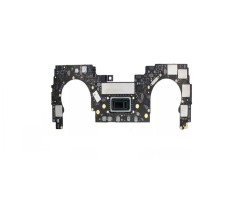What Is a Timing Belt? Cost & Replacement Guide 2025
Learn what a timing belt is, when to replace it, and how much it costs. Discover everything about timing belt replacement and avoid expensive engine repairs.

When it comes to vehicle maintenance, few components are as crucial and as overlooked as the timing belt. While it may not be as visible or as frequently talked about as your tires or brakes, a worn or broken timing belt can cause serious damage to your engine and result in costly repairs. In this blog, we’ll cover everything you need to know about this essential part of your engine: what is a timing belt, how it works, when it should be replaced, and the cost of changing a timing belt in today’s market.
What Is a Timing Belt?
Let’s start with the basics. What is a timing belt? A timing belt is a reinforced rubber belt located in your engine that connects the crankshaft to the camshaft. Its primary job is to ensure that the engine’s valves open and close at the correct times during each cylinder’s intake and exhaust strokes. This synchronization allows your engine to run smoothly and efficiently.
If the timing belt breaks or slips, the engine’s pistons and valves can collide. This can lead to severe internal damage, including bent valves, cylinder head or camshaft damage, and even complete engine failure.
How Does a Timing Belt Work?
The timing belt keeps the top and bottom halves of your engine in sync. More specifically:
-
The crankshaft controls the movement of the pistons.
-
The camshaft controls the opening and closing of the engine’s valves.
The timing belt links the two shafts so the valves and pistons operate in perfect harmony. The timing must be precise down to the millisecond—because if a valve is open when a piston comes up, it can cause major damage.
Signs You May Need a Timing Belt Replacement
Timing belts don’t usually give a lot of warning before they fail, which is why preventative maintenance is so important. That said, there are some signs that may indicate a problem:
-
Ticking noise from the engine
-
Engine misfires
-
Rough idling or difficulty starting
-
Oil leaking from the front of the motor
-
The check engine light comes on
If you notice any of these symptoms, it’s best to get your vehicle inspected immediately. But even without symptoms, regular timing belt replacement based on your manufacturer’s schedule is the smartest way to avoid disaster.
When Should You Replace Your Timing Belt?
Most vehicles require timing belt replacement every 60,000 to 100,000 miles, depending on the manufacturer. It’s essential to check your owner’s manual for the exact recommendation. If you’ve recently purchased a used car and aren’t sure when the timing belt was last replaced, it’s better to be safe than sorry.
Pro Tip: When replacing your timing belt, many mechanics will also recommend replacing the water pump, tensioner, and idler pulleys. These components wear at a similar rate and are usually located in the same area, making it more cost-effective to replace them together.
How Much to Replace Timing Belt?
One of the most common questions drivers ask is, “how much to replace the timing belt?” The cost varies widely depending on the make and model of your vehicle, where you live, and whether additional parts are replaced at the same time.
Average Timing Belt Replacement Cost
Here’s a rough breakdown of the timing belt replacement cost:
-
Compact cars: $300–$500
-
Mid-size cars and SUVs: $500–$900
-
Luxury vehicles or performance engines: $900–$1,200+
The cost of changing timing belt includes both labor and parts. Labor is often the largest expense because accessing the timing belt can be a time-consuming job. In some vehicles, it may take several hours to get to the belt due to the layout of the engine components.
What’s Included in the Cost?
When you get a quote for timing belt replacement, make sure it includes the following:
-
New timing belt
-
Tensioner and pulleys
-
Water pump (if applicable)
-
New seals or gaskets
-
Labor charges
Replacing these additional components at the same time can prevent future problems and save you money in the long run. For example, if your water pump fails shortly after a timing belt replacement, you’ll have to pay for labor all over again to access the same area of the engine.
Is It Worth Replacing a Timing Belt?
Absolutely. Replacing a timing belt is a preventive measure that can save you from engine damage that could cost thousands to repair. A failed timing belt can leave you stranded or worse—require a complete engine rebuild or replacement.
If your car is relatively new or in good condition otherwise, investing in a timing belt replacement makes financial sense. It’s a one-time cost that ensures your engine runs smoothly for many more miles.
Can You Replace a Timing Belt Yourself?
If you’re mechanically inclined and have the proper tools, it is technically possible to replace a timing belt yourself. However, this is not a beginner-level DIY project. The timing needs to be extremely precise, and making a mistake could lead to significant engine damage.
If you're unsure, it’s best to leave this job to a certified mechanic. They have the experience and diagnostic tools necessary to ensure everything is installed correctly.
Final Thoughts
The timing belt is one of the most essential components in your engine. Understanding what is a timing belt, how it functions, and when it should be replaced can help you avoid costly repairs and keep your car running smoothly.
To recap:
-
Replace your timing belt every 60,000 to 100,000 miles (check your manual)
-
Watch for symptoms like engine misfires or ticking sounds
-
Timing belt replacement cost ranges from $300 to over $1,000, depending on your vehicle
-
Always consider replacing related parts (like the water pump) at the same time
Don't wait until it breaks, the cost of changing a timing belt is much lower than replacing a damaged engine.
What's Your Reaction?






















